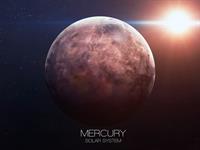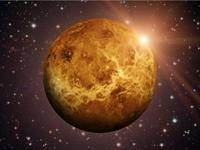PDF chapter test TRY NOW
Inner or Terrestrial Planets:
Mercury | Venus |
| Smallest and closest planet to the Sun | Second planet from the Sun |
| Airless and waterlessplanet. | Earth’s Twin (almost the same size as the Earth) |
| No atmosphere | No atmosphere |
| Experiences extremes of temperature | Longest rotation period (243 days) |
| No satellites | No satellites |
| Mercury can be viewed in the morning and evening with naked eye. | Visible in the mornings and the evenings. Also called as the Morning Star and the Evening Star. |
| Rotates from West to East. | It rotates in the opposite direction to all other planets except Uranus, i.e. East to West. |
| After the Moon, it is the brightest natural object in the night sky. | |
| Named after the Roman deity ‘Mercury’, the Messenger to the Gods. | Named after the Roman Goddess of love and beauty. |
 |  |
- Mercury is only about as wide as the Atlantic Ocean.
- Venus has yellowish clouds made of sulphur and sulphuric acid cover the entire planet causing light to reflect off the surface.
Inner or Terrestrial Planets:
Earth | Mars |
| Third Planet from Sun and fifth largest planet. | Fourth planet from the Sun and second smallest planet in the solar system. |
| Only planet known to support life. | It also has polar ice. |
| Atmosphere mainly made of: Nitrogen (78%) and Oxygen (21%) | Thin atmosphere |
Rotation period: 23hours, 56minutes | |
| Satellite: Moon | Satellites: Phobos and Deimos |
| Also known as Blue planet’ or ‘Watery planet’ because three-fourth of the Earth is covered by water. | Appears red, due to the presence ofiron oxide on its surface Often described as The Red Planet. |
Rotates from West to East | Rotates from West to East |
| The only planet in the solar system which is not named after any Greek or Roman deity. | Named after the Roman God of war. |
 |  |
Other important facts about Earth
Equatorial diameter: 12,756 km
The Earth revolves around the Sun at a speed of about 30 kmper second.
Important!
The distance between the Sun and the Earth is about 150 million kilometres (or 1AstronomicalUnit).
Note: The below image is from the textbook - to be restructured

Planets in Order of Size
Jupiter (Largest)> Saturn > Uranus > Neptune > Earth > Venus > Mars > Mercury (Smallest)
